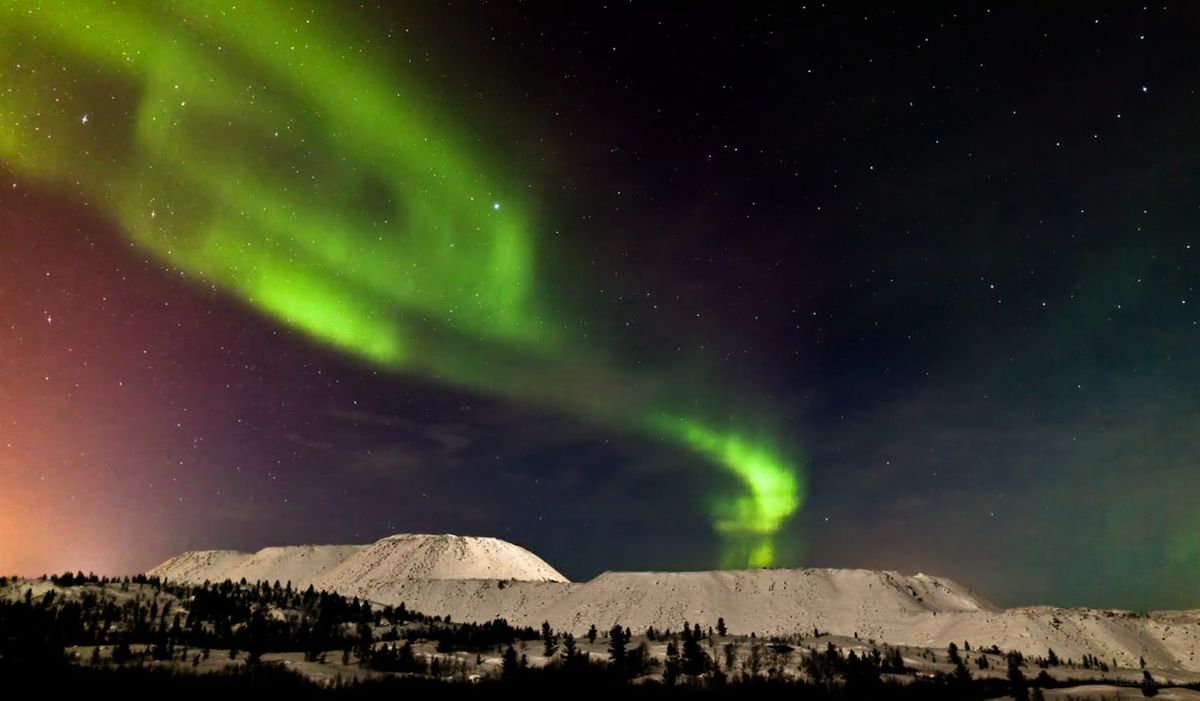
When powerful solar storms sent massive waves of charged particles streaking toward Earth last month, Terje Sorgjerd was ready.
The Norwegian landscape photographer was hunkered down in the frigid northern reaches of his home country, above the Arctic Circle near the Russian border. He spent a week up there capturing the super-charged aurora borealis — also known as the northern lights — that blazed up when the particles barreled into Earth's atmosphere and magnetic field.
The result of his efforts is an amazing two-minute video he dubbed "The Aurora," which went viral almost as soon as Sorgjerd posted it on the website Vimeo in late March. [Watch the amazing aurora video]
Millions of people have seen the majesty of the northern lights thanks to this video — and Sorgjerd is happy to have introduced so many people to a phenomenon he grew up marveling at.
"Seeing them as I grew up, they always meant a lot to me," Sorgjerd told SPACE.com. "They are unique, and I hope as many people get to experience them as possible." [Photos: Auroras Dazzle Northern Observers]
Braving the cold
Sorgjerd's project was motivated in part by the realization that there just aren't that many good aurora videos out there.
Sign up for the Live Science daily newsletter now
Get the world’s most fascinating discoveries delivered straight to your inbox.
"Most of the videos were very dark and without a lot of motion," he said. But, he added, "digital camera technology has improved a lot in the last few years, and I thought I could maybe try to make a better video."
So Sorgjerd packed up his gear and headed north. He spent a week in and around Kirkenes and Pas National Park, at about 70 degrees north latitude. He filmed from about 4 p.m. to 5 a.m. every day, when the aurora's glory wouldn't be drowned out by the harsh glare of the sun.
Temperatures hovered around around minus 13 degrees Fahrenheit (minus 25 degrees Celsius), Sorgjerd said, but the cold didn't dampen his spirits any.
Watching the aurora, he said, was "incredible and magical at the same time."
Sun's activity ramping up
The solar storms that spawned March's spectacular auroras appear to be part of a trend. The sun has been extremely active recently, unleashing several huge storms — including a Feb. 14 eruption that was the most powerful solar flare in more than four years.
Solar activity waxes and wanes on a roughly 11-year cycle, and the sun now seems to be rousing from an extended quiescent period. Experts predict activity to peak around 2013, so more stunning light shows could soon be in the offing (as well as some less desirable side effects — solar storms can disrupt satellites and power grids, as well as pose a danger to astronauts on spacecraft).
Whatever the future holds, we'll always have Sorgjerd's video of March's magnificent northern lights. It's there for all to see, and admire.
"This is also why I have freely allowed the video to be downloaded as 1080P by anyone who wants to," Sorgjerd said. "Hoping it will help a little bit at least to spread the word about this magic we sometimes see."
See "The Aurora" and other videos Sorgjerd has made at http://vimeo.com/terjes. And check out more of his work at www.tesophotography.com.
You can follow SPACE.com senior writer Mike Wall on Twitter: @michaeldwall. Follow SPACE.com for the latest in space science and exploration news on Twitter @Spacedotcom and on Facebook.
This story was provided by SPACE.com, a sister site to LiveScience.













